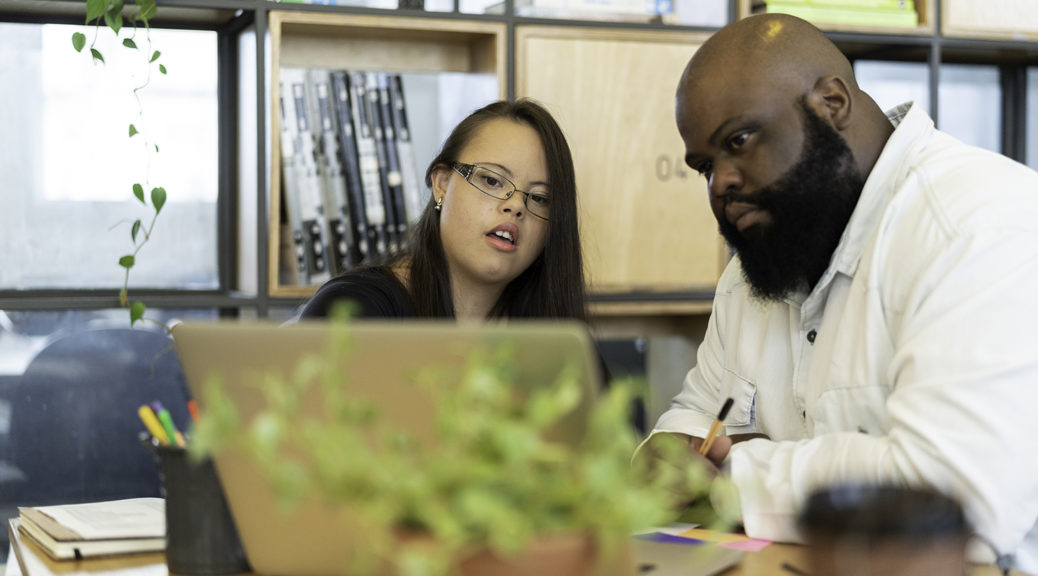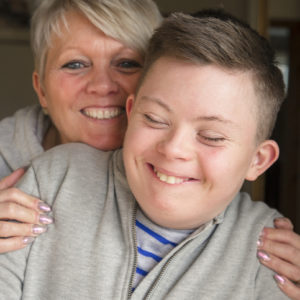What is People-First Language? Inclusive Speech Important In An Increasingly Diverse World

As conversations about diversity and inclusion take center stage in the U.S. and the world, we also need to focus on the language we use to describe our friends, neighbors and community members with disabilities. According to the Centers for Disease Control and Prevention, one in four Americans and approximately one in five Nebraskans have some type of disability.
People with disabilities make up the largest minority group in the U.S. All races, genders, ages, religions and socioeconomic levels are represented in this group. As the country works to be more equitable, we all need to remember to use language that’s inclusive to everyone—otherwise known as “people-first language.”
Care for people with disabilities as a Shared Living Provider! Learn more and sign up for more information today.
What is People-First Language?
People-first language is based on the fact that people with disabilities are first and foremost people. They’re husbands and wives, moms and dads, brothers and sisters, friends and coworkers, and more. They all have their own interests, dreams, abilities and needs. Everyone deserves respect and dignity. People-first language helps us make a conscious effort to honor that.
This type of inclusive language focuses on the individual rather than the perceived limitations of a disability. It eliminates harmful stereotypes, prejudices and assumptions. When you first begin using people-first language, it’s hard to know which words are harmful and what words or phrases to use instead. Remember: it’s ok to make mistakes, everyone does. The most important thing is to understand your mistake and then change your behavior and/or language so that everyone feels respected. See the table below for more examples of people-first language.
Note: This table is not comprehensive and shows some of the most common words/phrases used in people-first language.
Alternative to People-First Language
There are actually two types of disability language. One is people-first language and the other is identity-first language. Identity-first language puts the disability first in a phrase and characterizes disability as a core part of a person’s identity. Users of identity-first language express pride through direct statements or descriptions, like “autistic person.” Many in the autism community prefer “identity-first language” rather than “people-first language” because “we understand autism as an inherent part of an individual’s identity.”
As you take purposeful steps to be respectful and inclusive, be aware of how the words you say may be interpreted. Even if you say something that wasn’t intended to be disrespectful, the person you’re speaking with may interpret it differently. While people-first language is more common in the United States, the American Psychological Association recommends calling people what prefer to be called. If someone is upset because of something you said, offer a sincere apology and ask them what they prefer you say.
How You Can Support People with Disabilities
 If you’re passionate about working and advocating with people with disabilities, you’d probably be a great Shared Living Provider! Our Shared Living program offers individuals with disabilities a safe and structured living environment so they can learn life skills. Shared Living Providers also aide in helping these individuals develop connections in the community and find opportunities for inclusion.
If you’re passionate about working and advocating with people with disabilities, you’d probably be a great Shared Living Provider! Our Shared Living program offers individuals with disabilities a safe and structured living environment so they can learn life skills. Shared Living Providers also aide in helping these individuals develop connections in the community and find opportunities for inclusion.
Direct caretaking isn’t right for everyone though, or maybe it just isn’t the right time in your life. There are still so many other ways you can support people with disabilities, such as:
- Join our team: Our team of skilled, caring professionals recruit Shared Living Providers, provide training and offer support to Providers and the individuals they care for. Browse our current openings!
- Advocacy: Create awareness by sharing information on social media, in a blog, or word-of-mouth. You can subscribe to this blog or follow our Facebook page to learn more about our Shared Living program.
- Helping with day-to-day tasks: Run errands for individuals with disabilities and their caregivers. This will give them more time to participate in community activities.
- Share your talents: Volunteer to tutor, mentor, or teach a special skill.
- Encourage others to help: Read this blog for ideas on how to get your church more involved.
About KVC Nebraska
KVC Nebraska is a private, nonprofit organization providing foster care, home-based support for people with disabilities, intensive in-home prevention and educational support to strengthen families. Learn more about KVC Nebraska here.

